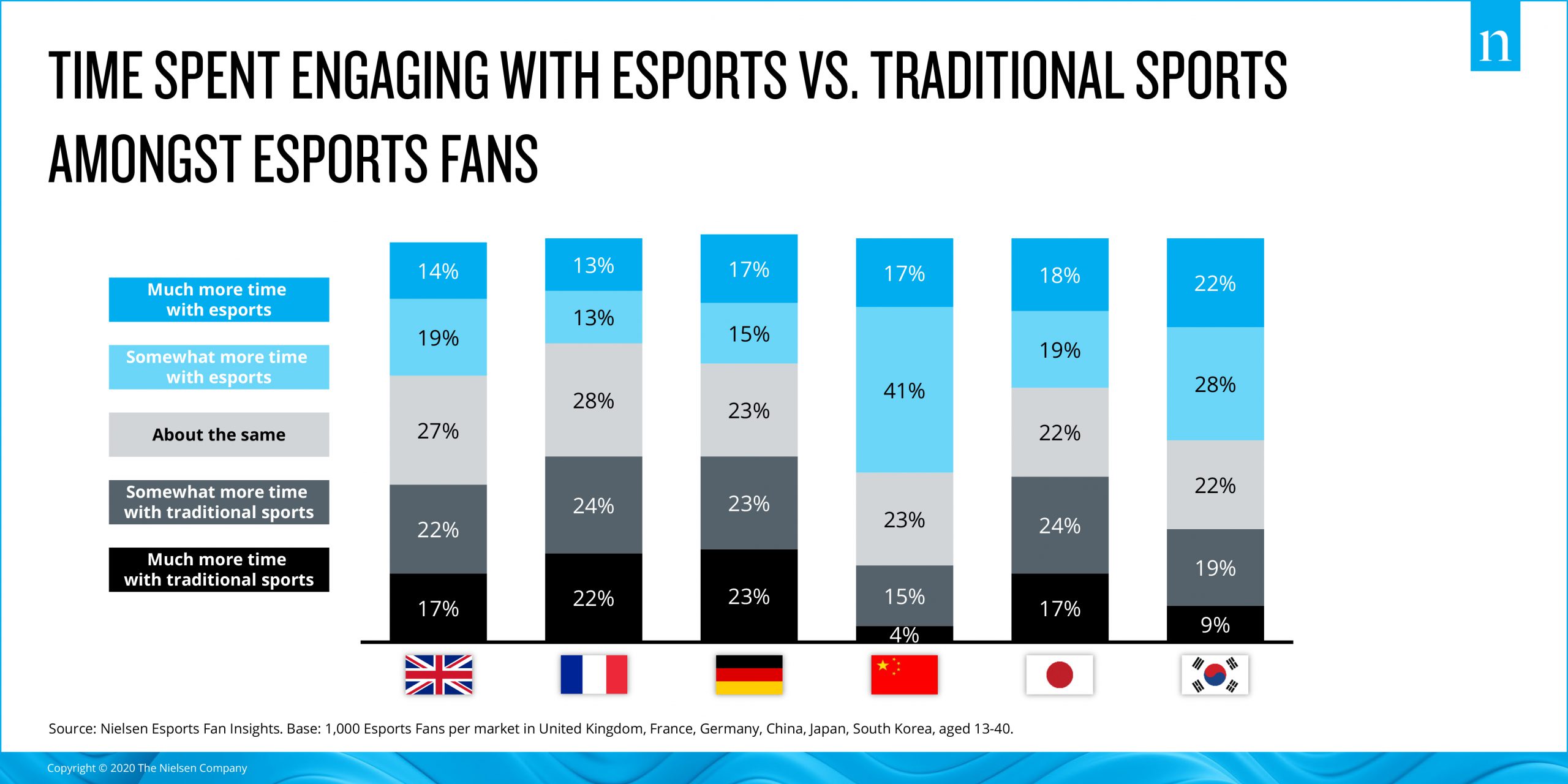Sponsored content by Nielsen.
Did the pause of live sports and events have a positive impact on esports? While this question has been passionately debated over the past few months, the accurate answer can be found by leveraging Nielsen Esports Fan Insights — which provides global and local fan data, and offers a view into fan gaming and media behavior, engagement and purchasing decisions.
To fill the gap until traditional sports returned, many sports rights holders held virtual events and competitions. For instance, football leagues were using virtual football simulation games like EA Sports’ FIFA or Konami’s PES eSoccer, while Formula 1 was using the Codemaster’s F1 2019 game during the sporting blackout. The result? These gaming titles enjoyed substantial consumer engagement — simply by providing sports fans and gamers with something to watch.

In France, where football and FIFA are first in their respective sports/esports interest rankings (as previously reported), a true case study emerged. Canal+ broadcast a FIFA20 match between the famous French rivals Paris Saint-Germain and Olympique de Marseille. More than 200 000 people watched the game live. This reflected high viewership for esports, as the broadcast was free on the French channel, even if numbers were clearly below the average for a Ligue 1 Conforama broadcast in this time slot. Interestingly, the programs generated a much younger audience than this time slot’s usual viewers with 40% of 35-49 years old (+11 pts vs. Ligue 1 Conforama matches this season on Sunday nights on Canal+) and -24 pts for the +60 age group.
Further analysis shows many other examples of virtual sporting events attracting fans of the given sport more than fans of a video game based on the sport.
So why would fans who typically watch football or handball in their spare time (and might never have heard of Counter-Strike or League of Legends) now watch these games? Learning to understand rather complex games like League of Legends or DOTA 2, which have unique pro players, a variety of champions/heroes within the games and even different in-game capabilities makes it incredibly difficult for viewers without previous exposure.
According to data from Nielsen Fan Insights, the reason is simple: esports fans are also fans of football, handball, basketball, and other traditional sports—in fact, they are often significantly more interested in those sports than the general population. The data suggests that they spend more time engaging with traditional sports than with esports (especially among European esports fans). So while traditional sports was on hold, the CS:GO or League of Legends fans had significantly more time on their hands to watch these games, without the competing distraction of football.
In addition, according to Nielsen Games Video Games Tracker (VGT), 63% of gamers spent more time playing video games since the start of the pandemic—a path that historically links to esports.
Combine the newfound esports fans with more gaming and increased viewership of competitions like the ESL Pro Tour (Counter-Strike) or Riot Games’ LEC (League of Legends)—tried and true esports contests—and it’s clear that esports has experienced a surge.